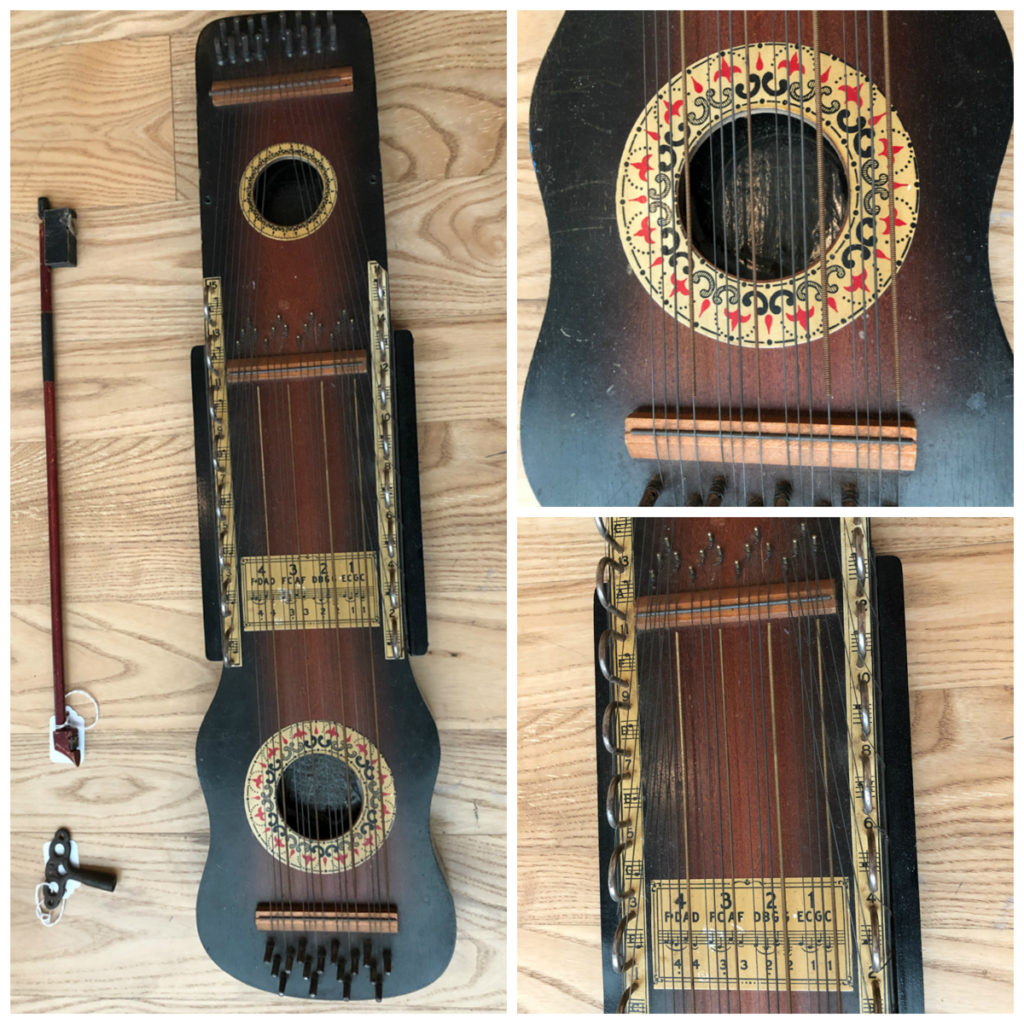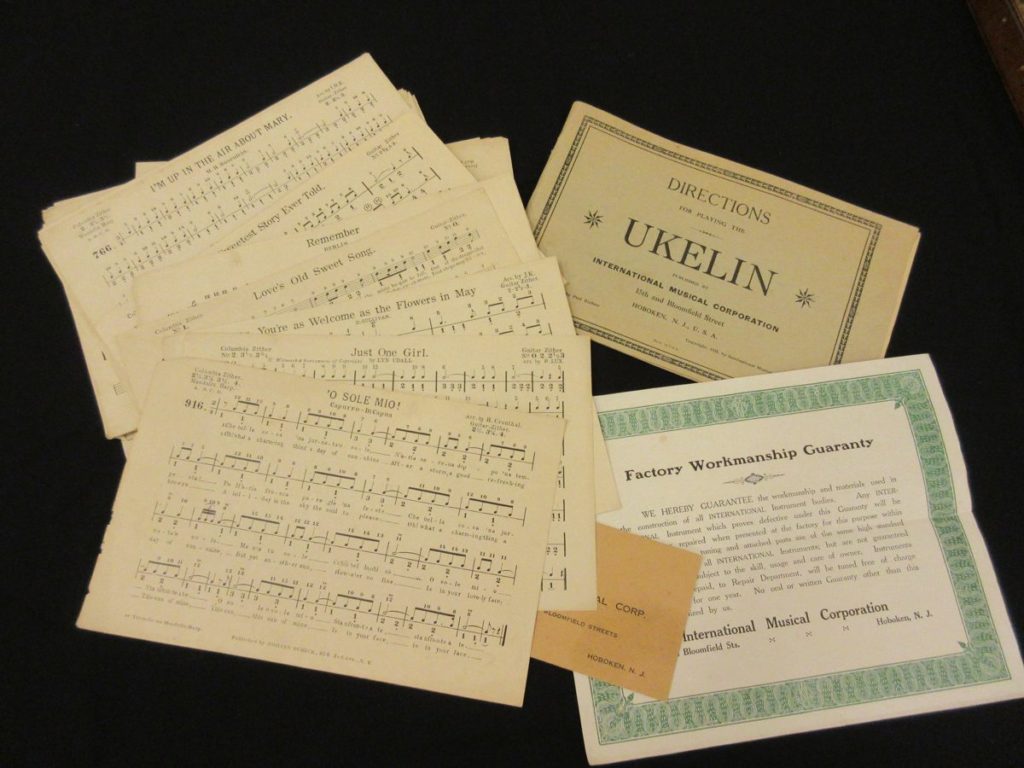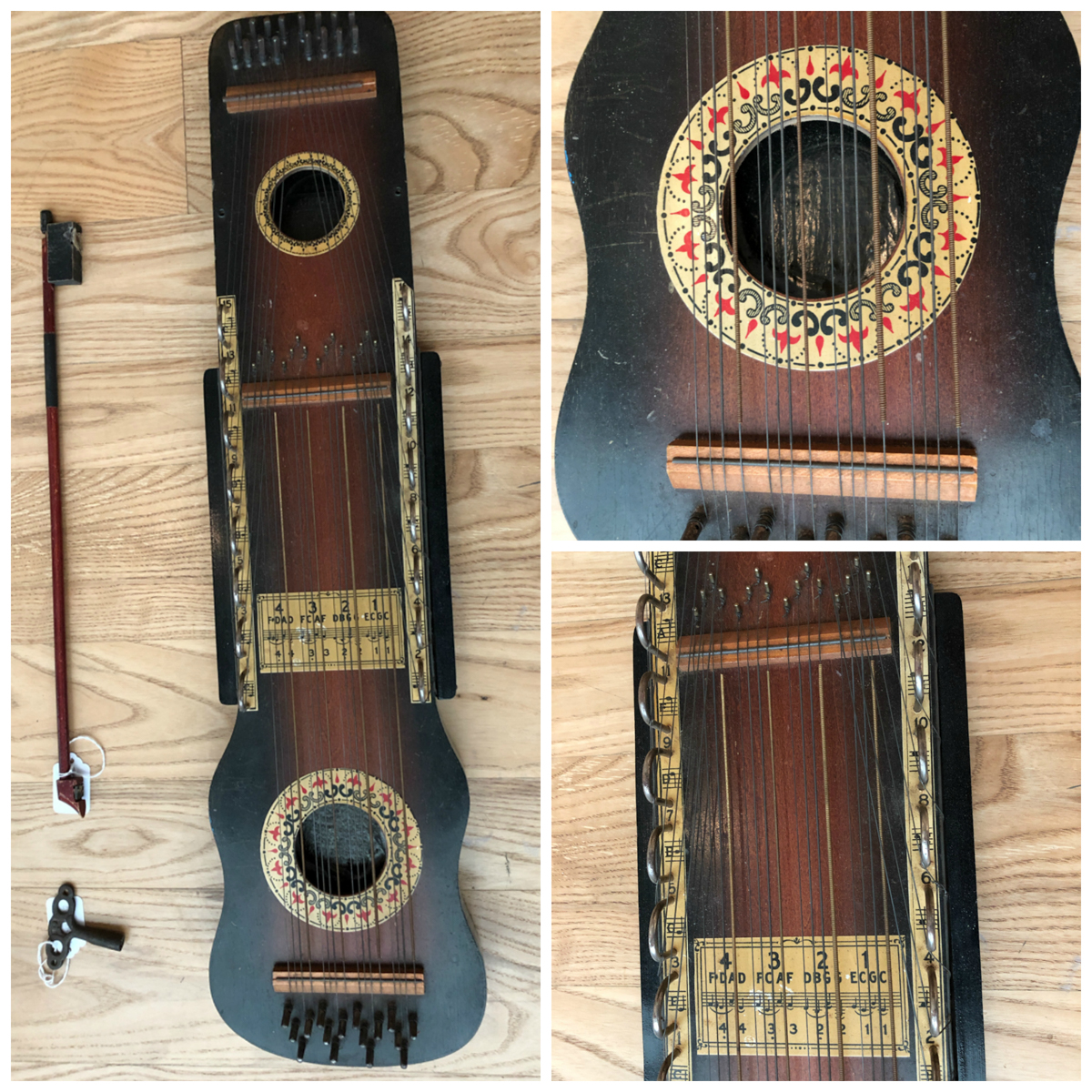Want to know what’s behind our museum vault door? With this occasional series, we take you behind the scenes to learn more about some of the interesting objects in our museum collection.
Every museum’s permanent collection is akin to an iceberg – there are the things you see above the surface (i.e. the artifacts and objects on display), and there are the things that lie below the surface (i.e. the artifacts and objects in museum collection storage). However, even though no museum has the space to have all their collection on display at one time, it doesn’t mean we can’t share some of those behind-the-scenes objects with you here!
One of our most enigmatic objects is an instrument you might never have heard of: the ukelin. The ukelin is a Frankenstein instrument, with enthusiasts speculating that its origins can be traced via the Schwatzer bowed zither and the Hawaiian art violin. Plus you can throw a ukulele into the mix!
Hard to imagine what that might look like? Then check out the pictures below:

The ukelin utilizes two sets of strings: one set of sixteen strings tuned to the scale of C and another set of four groups of four strings all tuned to a different chord. On the neck of the instrument, the first set of strings is akin to a violin, and there are guiding posts located on the neck to show the player where to move the bow in order to elicit the desired melody. On the body of the instrument, the accompanying chords are meant to be plucked or picked to the song being played. Here is a diagram if you are still a little confused about what in the world is going on with this instrument:

Clear as mud, right? If you think the diagram is convoluted and confusing, just wait until you hear about the history of this conglomerate beast!
The man who first laid claim to this invention was Paul Richter, who requested a patent for his creation in 1923, applying it to the Phonoharp Company. After merger with Schmidt International Inc., Schmidt’s traveling salespeople would go door-to-door selling these odd-ball instruments to any interested takers. Other companies sold similar instruments.
The ukelin was a novelty hit for a short time in the 1930s – the salesperson would play a few simple tunes for potential customers, convincing them that the instrument was incredibly simple to learn how to play, even for a beginner: “You could learn in a day!” Budding musicians were often persuaded to buy with the offer of a “bargain” price that could be paid off in installments, and once the sale was done, they were left with the ukelin, instructions of how to play by number, and sheet music.

So, bow in hand, instrument and provided sheet music on the table, the new ukelin owner would sit down to learn their hip new instrument in just a day as the salesman had promised. However, the new ukelin owner would soon discover that the instrument was in fact too hard to play for a novice musician – two sets of strings, plucking, and bow action proved to be too difficult for the casual player. Perhaps too much like rubbing your tummy and patting your head at the same time!
Plus, once the new owner would haphazardly try to play their new instrument all day and the instrument needed tuning, it was nearly impossible to tune back. And, so the Frankenstein creation was tucked away into attics and other such forgotten places for grandchildren to find years later and try their hand at the instrument all over again.
Check out a couple more recent ukelin players to get a sense of the process of playing:
While ukelin enthusiasts are trying to bring ukelins back into mainstream culture with renditions of contemporary songs like “Sweet Caroline” and “Come Sail Away,” the true sound of the ukelin is not reaching its full potential in these videos. Professional musicians like Chris Sayre have tried to master this obscure instrument in an effort to produce the truly haunting and beautiful sound that can be elicited from the complex sets of ukelin strings.
The beautifully bizarre ukelin clearly demonstrates that the possibilities of music and musical instruments know no bounds, but also that what looks pretty complex often is!


